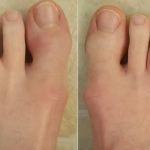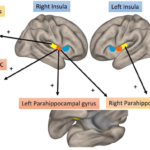 The use of objective, validated outcome measures to track progress in symptom control for patients with psoriatic arthritis was discussed in a session at the 2019 ACR/ARP Annual Meeting titled Optimizing Outcomes in Psoriatic Arthritis: A Domain-Based Strategy. In the years since this presentation, additional research has helped supply greater insights into this topic and show what the future may hold.
The use of objective, validated outcome measures to track progress in symptom control for patients with psoriatic arthritis was discussed in a session at the 2019 ACR/ARP Annual Meeting titled Optimizing Outcomes in Psoriatic Arthritis: A Domain-Based Strategy. In the years since this presentation, additional research has helped supply greater insights into this topic and show what the future may hold.
In the original session, Elaine Husni, MD, MPH, assistant professor of medicine and vice chair of the Department of Rheumatic and Immunologic Diseases at Cleveland Clinic Lerner College of Medicine, Case Western Reserve University, Cleveland, described two important advances: 1) domain-based outcome measures have been developed to address peripheral arthritis, axial arthritis, enthesitis, dactylitis and skin involvement, and 2) studies, such as the Tight Control of Psoriatic Arthritis (TICOPA) trial, have demonstrated how tight control of disease activity leads to improvements in outcome measures for patients.1
On the subject of domain-based outcome measures, Dr. Husni described some of the main measures being used in research and clinical practice. These include the Psoriasis Area and Severity Index (PASI) for skin disease, the ACR20/50/70 for peripheral arthritis, the Leeds Enthesitis Index (LEI), the Spondyloarthritis Research Consortium of Canada (SPARCC) Enthesitis Index and the Maastricht Ankylosing Spondylitis Enthesitis Score (MASES) for enthesitis, the Leeds dactylitis index for dactylitis, and the Bath Ankylosing Spondylitis Disease Activity Index (BASDAI) for axial disease.
One of the most important areas of research in psoriatic arthritis, Dr. Husni explained, is identifying and developing the optimal composite measures that will allow for accurate tracking of disease activity and be facile enough to perform quickly, yet accurately, in clinical practice. Some current composite measures include the Disease Activity in Psoriatic Arthritis (DAPSA) score, the Composite Psoriatic Disease Activity Index (CPDAI) and the Psoriatic Arthritis Disease Activity Score (PASDAS).
It is likely that, even in the future, no one composite measure will be perfect in patients with all variations of psoriatic arthritis. However, Dr. Husni noted, rheumatologists should continue to think critically and creatively on how best to measure outcomes for all disease states of psoriatic arthritis, such as for a new vs. an established diagnosis or for treatment-naive patients vs. treatment-refractory patients.
Raising the Bar
Since 2019, the number of effective treatments for psoriatic arthritis has continued to grow and, given these promising developments, Dr. Husni states that clinicians can feel comfortable in “raising the bar” on expectations for how much we can improve patients’ outcomes. The concept of minimal disease activity or remission has emerged as a reasonable outcome to seek when treating patients with psoriatic arthritis. These measures include Minimal Disease Activity (MDA) and DAPSA remission or low disease activity.



